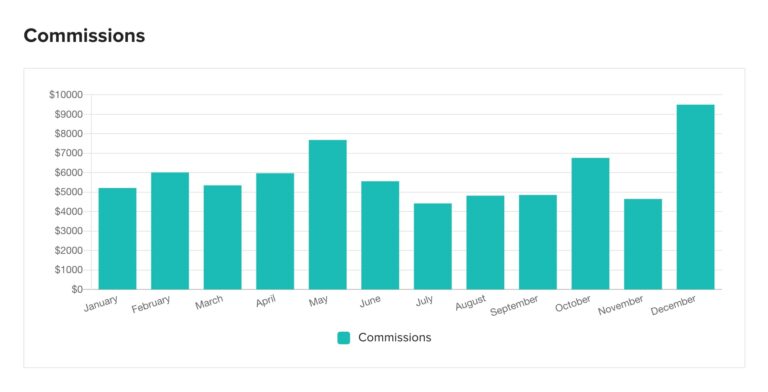
Imagine you’re starting a custom handbag company and you’re ready to create your ecommerce website just in time for the holiday season.
You recruit a couple of friends to serve as models and hire a professional photographer to shoot beautiful shots of your bags for the website. You want to find a secure place to store the images until you’re ready to upload photos to your site to showcase your collection. What you need is an image hosting site.
Here’s more about how image hosting works and what to look for when choosing a hosting site.
What is image hosting?
An image hosting service is a platform that lets usersupload images and videos to a remote external server to securely store, manage, and share files. The server organizes the pictures as data, and gives each photo a specific code you can embed in websites and other digital platforms using direct links.
Image hosting gives users control over how you and others access and share the hosted pictures. Image hosting services also preserve photos in the unfortunate event your website or computer crashes.
How does image hosting work?
Image hosting services help users conserve web storage by saving the photos in a remote location, like a cloud server or third-party platform. Many use an application programming interface (API) that integrates with a client’s website to help with uploading images and improving accessibility.
For an ecommerce business, image hosting increases your website performance. Hosting photos and videos externally reduces the load time on your website, increasing its speed and enhancing the user experience. Thanks to the secure nature of image hosting platforms, it also helps to ensure your photos always load and are visible to web visitors.
Image hosting lets users share photos widely across platforms, including on their social media accounts.
What to look for when choosing an image hosting site
- Editing tools and features
- Security measures
- Storage space
- File formats
- Ease of use
Though your specific image hosting needs will vary depending on your business, consider the following when you’re trying to select your ideal service:
1. Editing tools and features
Many image hosting services include editing tools and features that let you create collages or animations using your images. Editing tools can adjust image sizing for your site or social media platforms, or add fun touches like text overlay or filters for promotional materials.
2. Security measures
Although most image hosting services include security features, ensure that the program you choose provides comprehensive encryption and malware protection. The image hosting site you select should also meet your unique security needs. For example, if your business needs to comply with privacy policies like HIPAA or GDPR, you’ll need to verify that your hosting site can meet these standards.
3. Storage space
Many image hosting services offer free storage up to a certain limit but will charge you for additional space. When selecting a service, consider the assets of your business and how much space you need in the short term, as well as how much storage you’ll need as your company grows.
4. File formats
You’ll want to ensure your image hosting platform is compatible with a wide range of file formats to account for your brand’s diverse needs, especially if you’re storing a mix of static imagery and videos. Check to make sure the service doesn’t have any specific limitations or blockers that constrain your ability to save and upload certain file types.
5. Ease of use
Look for a service with an intuitive user platform and optimized user-friendly interface to allow for quick uploads and accessibility. The best image hosting platforms have developer tools and APIs you can integrate into your own websites and tools.
Top image hosting sites
A wide assortment of image hosting sites offer both free and paid programs that can meet your image storing needs. Some of the most popular image hosting services include:
Flickr
Flickr is one of the oldest and best known photo communities on the internet with more than 60 million users per month and over 112 million total users. The platform lets users store and share images across a variety of platforms, including websites, RSS feeds, and email. Flickr has both a free service and a Flickr Pro account: Flickr offers free storage up to 1,000 images, and Flickr Pro accounts start at $9.49 per month for unlimited photo uploads, sharing, and backup. The Pro account also includes features like a detailed statistics dashboard and enhanced privacy settings.
Dropbox
Dropbox offers 2 gigabytes of free storage, with paid plans starting at $10 per month for an additional 2 terabytes of storage. Dropbox includes extensive file management capabilities beyond basic uploading, such as folder creation, preview, and recovery, as well as robust naming conventions that help with organization. It also offers features like tracking file engagement and setting expiration dates on links if you have images or videos that you want accessible for only a limited time.
Cloudinary
Cloudinary is especially helpful for large companies that use artificial intelligence (AI) technology. The platform’s key features include extensive automation capabilities that lets brands manage and upload multiple images at once. Cloudinary includes a free program that is open to three users on one account, requiring up to 25 monthly credits that you can apply toward 25,000 uploaded assets, 25 gigabytes, or 25 gigabytes monthly net viewing bandwidth. Paid plans start at $89 per month for additional storage and security features.
Google Photos
Google offers 15 gigabytes of free storage across Google Drive and Gmail, and it automatically syncs with your existing accounts for easy uploading. Google Photos includes tools to create your own collages and animations using your photo library and includes comprehensive organization by date, location, or person in the image. Google Photos also uses the company’s winning search capability to bolster its own search capabilities. For more space, users can pay $2 per month for 100 gigabytes, making it one of the most affordable options among the paid plans.
Imgur
If you’ve spent any time on the internet, then you’ve interacted with or viewed an Imgur image, likely in the form of a viral meme or GIF. While Imgur is popular among Reddit users, brands and marketers looking to get in on the fun can also use it. The platform is free and offers unlimited storage and quick uploading, direct URL generation, and sharing.
Internxt
Internxt is an option for brands that are especially keen on security since it focuses on end-to-end encryption and open-source cloud storage. Internxt recently launched its Internxt Drive, a tool designed to compete with Google Drive and DropBox. The platform offers a free trial plan of 1 gigabytes; paid plans start at $7.50 annually for 200 gigabytes and go up to $52.50 for 10 terabytes.
ImgBox
ImgBox is free, beginner-friendly, and easy to use, although it may not be the best option for large file sizes. The platform lets you upload an image up to 10 megabytes that will be online forever and accessible for sharing. Every image includes a generated HTML and BB code for easy sharing and embedding.
Image hosting sites FAQ
What is the best image hosting site?
The best image hosting service depends on the specific needs of your business. Different services offer various levels of storage and security. However, many support free users or offer programs that let you test the image hosting capabilities before committing to a paid program. Popular image hosting sites include Flickr, Dropbox, Cloudinary, Google Photos, Imgur, Internxt, and ImgBox.
What is a free website to host pictures?
There are several free image hosting sites, such as Imgur and ImgBox, while other platforms often include gratis usage up to a certain level of storage or number of images.
Image hosting sites that include free services with the option for additional paid storage or pro features include Flickr, Google Photos, DropBox, Cloudinary, and Internxt.
How do I host a public image?
Hosting a public image is as simple as visiting an image hosting website, setting up an account, and uploading your photo, which in most cases will be saved forever to the host’s server. The hosting website will generate a direct link or HTML code you can share on your own websites or social media accounts. For more advanced features, including more comprehensive organization, security, editing, and additional storage, you can upgrade to a pro account.





